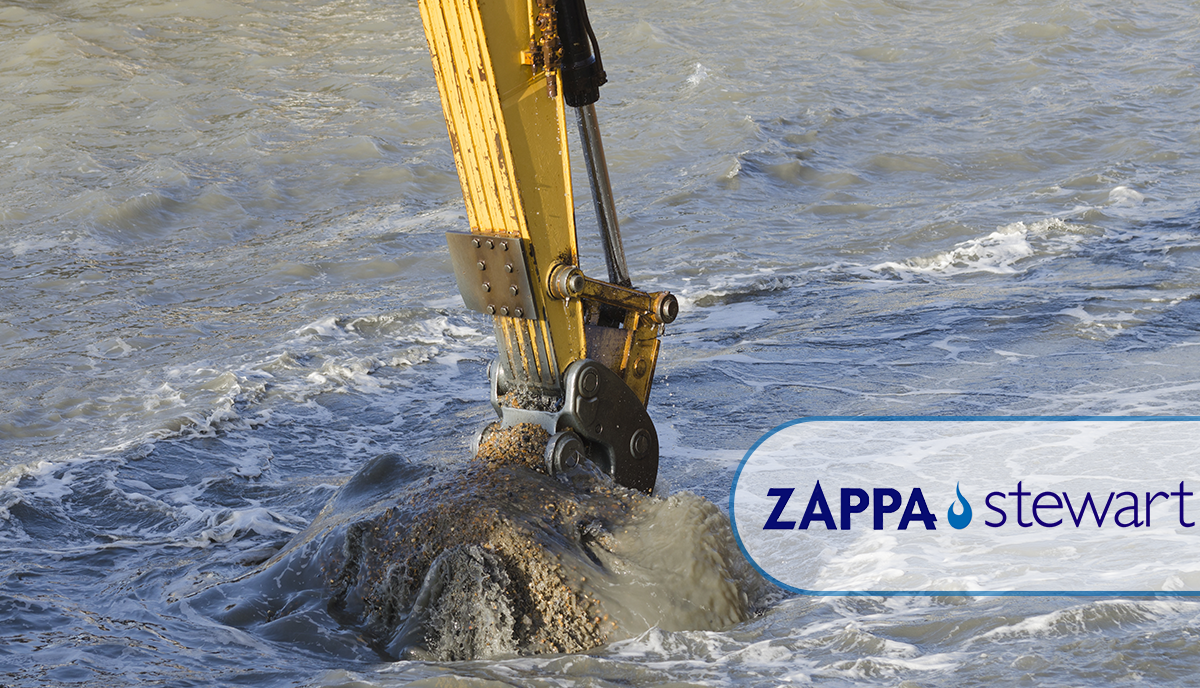 Dredging of saturated sediments from waterways, lakes, and storm water ponds generates massive quantities of waste material that require costly and time-consuming management practices, such as dewatering, solidification, transportation, and off-site disposal. If solidification of saturated sediments, followed by transportation and disposal, are parts of the work plan at your site, superabsorbent polymers (SAPs) can help to reduce your budget as well as time on-site, and they can minimize environmental risks.
Dredging of saturated sediments from waterways, lakes, and storm water ponds generates massive quantities of waste material that require costly and time-consuming management practices, such as dewatering, solidification, transportation, and off-site disposal. If solidification of saturated sediments, followed by transportation and disposal, are parts of the work plan at your site, superabsorbent polymers (SAPs) can help to reduce your budget as well as time on-site, and they can minimize environmental risks.
Superabsorbent Polymers Minimize Waste Which Minimizes Transportation & Disposal Costs
Transportation and disposal (T&D) of dredged sediments are typically major components of the overall project cost. Trucking of waste material from a project site to a landfill requires dump trucks, drivers, diesel fuel, and landfill tipping fees, costs that add up very quickly when you’re managing large quantities of waste. The key to minimizing T&D costs is to minimize the amount of waste that needs T&D in the first place. One simple way to do this is to use an efficient waste solidification reagent, such as SAPs, which are widely used by dredging contractors to solidify saturated sediments with minimal reagent quantities as compared to traditional bulking materials (sawdust) and pozzolanic, or cementitious materials (i.e., Portland cement).
For a head-to-head comparison of SAPs with sawdust and Portland cement, let’s start with the amendment, or dosage, rate. Portland cement can require dosage rates ranging from 10% to 25% (by weight). Sawdust can require dosage rates from 100% to 200% of the weight of the waste. SAPs however are applied at dosage rates ranging from 0.5% to 1.5% by weight. While Portland cement and sawdust are low-cost materials, their liquid absorbent inefficiencies result in a lot of unnecessary weight added to the waste. Keep in mind, any material that is added to the waste to absorb liquid must be transported and disposed of along with the original waste quantity. Every pound of treatment amendment costs extra dollars in T&D charges. This cost comparison calculator allows you to adjust the pricing and quantity inputs for sawdust, cement, and SAPs so you can see for yourself how SAPs compare to traditional commodity absorbents and pozzolans.
Time On-Site = Money
 In addition to the cost component, SAPs help save time on-site. Cement can require 10-25 times more reagent than SAPs, and sawdust can require 100-200 times more material than SAPs. Imagine the extra time that would be spent staging reagent, mixing it into the waste, and transferring the treated waste to dump trucks for off-site disposal if you used cement or sawdust rather than SAPs.
In addition to the cost component, SAPs help save time on-site. Cement can require 10-25 times more reagent than SAPs, and sawdust can require 100-200 times more material than SAPs. Imagine the extra time that would be spent staging reagent, mixing it into the waste, and transferring the treated waste to dump trucks for off-site disposal if you used cement or sawdust rather than SAPs.
Related Article: 5 Reasons to Solidify Waste with Superabsorbent Polymers
Another factor to consider when evaluating solidification reagents is environmental impact. Cement is known to contain heavy metal contaminants that can cause problems in landfills once the treated material comes into contact with landfill leachate. SAPs however do not leach any chemical compounds into the environment. In fact, SAPs are used globally in baby diapers, personal hygiene products, and are even approved by the FDA as an indirect food additive. SAPs are extremely safe and environmentally friendly.
When budgeting your next sediment dredging project, consider the impacts that the solidification reagent selection has on the overall project costs, timeline, and environmental risks. Superabsorbent polymers are designed to save money, time, and protect the environment.




